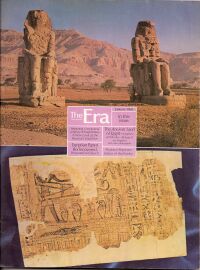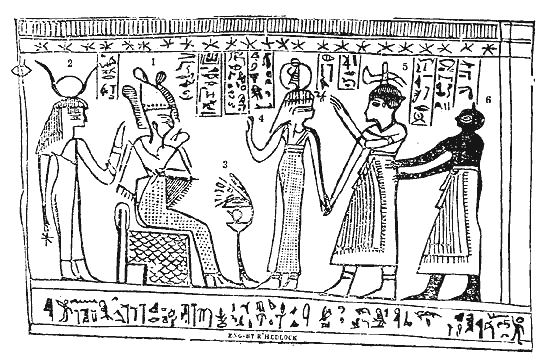
FAIR is a non-profit organization dedicated to providing well-documented answers to criticisms of the doctrine, practice, and history of The Church of Jesus Christ of Latter-day Saints.
This article is a draft. FairMormon editors are currently editing it. We welcome your suggestions on improving the content.
| Answers portal |
| The Book of Abraham |
 |
|
FAQ:
Book of Abraham content: Production: |
|

The final illustration (view) is of the justified and exalted Hor (figure 5) being introduced by the Egyptian gods Ma'at (4) and Anubis (6) to the god Osiris (1) in the afterlife. Isis (2), Osiris' sister/wife, is also present. Their names are indicated by the Egyptian characters above their heads.[1]
Joseph Smith's notes to Facsimile 3 identify the illustration as representing "Abraham sitting upon Pharaoh's throne" (note to figure 1), an event foreshadowed in the text of the Book of Abraham (Abr 2꞉21-25), but not described in any existing translation produced by Joseph.
Critics focus on three specific interpretations which reference characters in the facsimile. Joseph Smith provides the following identifications for three of the figures in the facsimile:
What is notable in this particular case is that Joseph isn't simply assigning an identify to each figure, but is indicating that characters located near each figure confirm the assignments. Egyptologists, on the other hand, note that the characters have an entirely different meaning. Robert K. Ritner, [note] Professor of Egyptology at the University of Chicago, states that "Smith’s hopeless translation also turns the goddess Maat into a male prince, the papyrus owner into a waiter, and the black jackal Anubis into a Negro slave."[2]

FAIR is a non-profit organization dedicated to providing well-documented answers to criticisms of the doctrine, practice, and history of The Church of Jesus Christ of Latter-day Saints.
We are a volunteer organization. We invite you to give back.
Donate Now